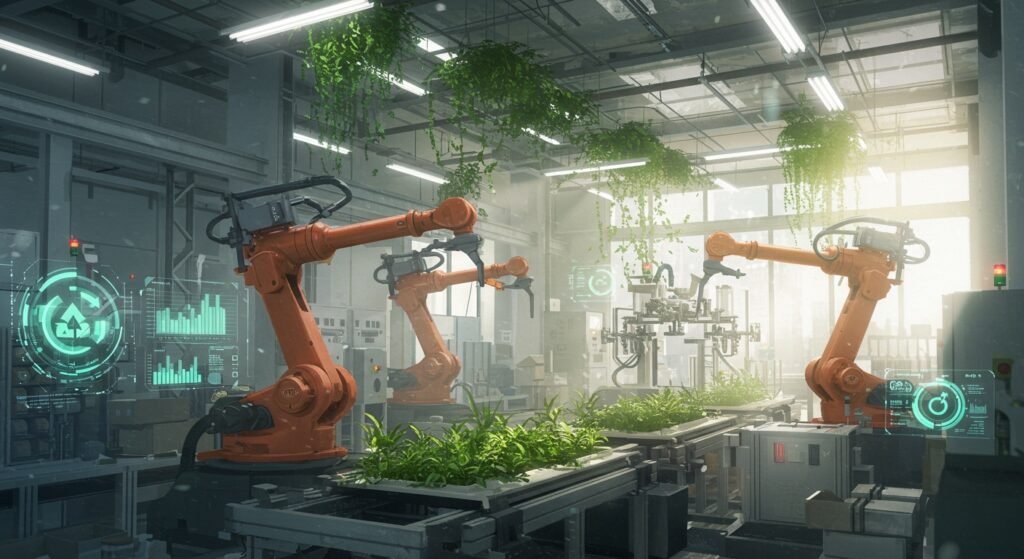In an era defined by increasing environmental consciousness and resource scarcity, the adoption of Green Manufacturing Techniques has become not merely an ethical choice but a strategic imperative for industries worldwide. These techniques aim to minimize environmental impact throughout the entire product lifecycle, from design and raw material sourcing to production, use, and end-of-life disposal. By integrating sustainability into core operations, businesses can reduce waste, conserve energy, lower costs, and enhance their brand reputation. This article explores the core principles, implementation strategies, benefits, and future trends of green manufacturing.
Table of Contents
- Key Principles of Green Manufacturing Techniques
- Implementing Green Manufacturing Techniques in Industrial Engineering
- Benefits and Challenges of Green Manufacturing
- Future Trends in Sustainable Industrial Practices
Key Principles of Green Manufacturing Techniques
Green manufacturing is built upon several foundational principles that guide businesses toward more sustainable operations. Adhering to these principles helps minimize ecological footprints and maximize resource efficiency.
Waste Reduction and Recycling
At the heart of green manufacturing lies the commitment to reducing waste at every stage. This includes minimizing material waste during production, optimizing packaging, and implementing robust recycling and reuse programs for both materials and products. The goal is to move towards a circular economy where waste is minimized, and resources are kept in use for as long as possible.
Energy Efficiency
Optimizing energy consumption is crucial. This involves investing in energy-efficient machinery, utilizing renewable energy sources, optimizing production processes to consume less power, and implementing smart energy management systems. Reducing energy use not only cuts down on greenhouse gas emissions but also significantly lowers operational costs.
Sustainable Materials
Selecting environmentally friendly materials is a key component. This means prioritizing materials that are renewable, recycled, recyclable, non-toxic, and sourced from suppliers with sustainable practices. Avoiding hazardous substances and designing products for material efficiency are also vital.
Life Cycle Assessment (LCA)
A comprehensive approach, LCA involves evaluating the environmental impacts associated with all stages of a product’s life from raw material extraction through material processing, manufacture, distribution, use, repair and maintenance, and disposal or recycling. This assessment helps identify environmental hotspots and areas for improvement.
Implementing Green Manufacturing Techniques in Industrial Engineering
For industrial engineers, integrating Green Manufacturing Techniques means re-evaluating processes, designs, and supply chains to achieve environmental goals without compromising efficiency or quality. This often involves significant upfront planning and investment, but yields long-term benefits.
One practical step is adopting lean manufacturing principles, which inherently reduce waste and improve efficiency, thereby aligning with green goals. Another is to invest in advanced manufacturing technologies such as additive manufacturing (3D printing), which can reduce material waste by building objects layer by layer, only using material where it is needed.
Furthermore, redesigning products for disassembly and recyclability (Design for Environment – DfE) ensures that products can be easily taken apart and their components reused or recycled at the end of their life. This approach requires close collaboration between product designers and manufacturing engineers.
A comparison of traditional vs. green manufacturing approaches highlights the shift:
| Aspect | Traditional Manufacturing | Green Manufacturing |
|---|---|---|
| Resource Use | Linear (take-make-dispose) | Circular (reduce-reuse-recycle) |
| Energy Source | Primarily fossil fuels | Renewable energy focus |
| Waste Management | Disposal focus | Prevention & recovery focus |
| Product Design | Performance-centric | Life-cycle & sustainability centric |
To further explore related concepts, you might be interested in our article on Sustainable Supply Chains.
Benefits and Challenges of Green Manufacturing
Adopting green manufacturing practices offers a multitude of benefits, alongside some notable challenges.
Benefits:
- Cost Savings: Reduced energy consumption, waste generation, and material use can lead to significant operational cost reductions.
- Enhanced Brand Image: Consumers and stakeholders increasingly favor environmentally responsible companies, leading to improved reputation and market appeal.
- Regulatory Compliance: Staying ahead of environmental regulations can prevent fines and legal issues, and open up new market opportunities.
- Innovation: The pursuit of green solutions often sparks innovation in product design, processes, and business models.
- Improved Employee Morale: Employees often feel more engaged and proud to work for a company committed to sustainability.
Challenges:
- Initial Investment: Implementing new technologies and processes can require substantial upfront capital.
- Technological Hurdles: Existing infrastructure may not be compatible with green technologies, requiring significant overhauls.
- Supply Chain Integration: Ensuring sustainability across the entire supply chain can be complex and require collaboration with suppliers.
- Lack of Awareness/Expertise: Companies may lack the internal knowledge or trained personnel to effectively implement green strategies.
Future Trends in Sustainable Industrial Practices
The landscape of green manufacturing is continuously evolving, driven by technological advancements and increasing global demands for sustainability. One significant trend is the rise of Industry 4.0 technologies – such as Artificial Intelligence (AI), the Internet of Things (IoT), and big data analytics – which enable unprecedented levels of efficiency, predictive maintenance, and resource optimization. AI, for instance, can analyze production data to identify inefficiencies and suggest improvements for reducing waste and energy consumption.
Another emerging trend is the strong push towards a truly circular economy, where products are designed for infinite loops of reuse and recycling, eliminating waste entirely. This paradigm shift requires fundamental changes in product design, business models (e.g., product-as-a-service), and material management. Organizations like the Ellen MacArthur Foundation are at the forefront of advocating for and researching circular economy principles.
Ultimately, the future of manufacturing is undeniably green. Companies that embrace these evolving techniques will not only contribute positively to the planet but will also secure a competitive edge in the global market.


